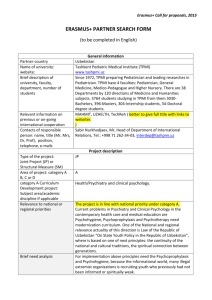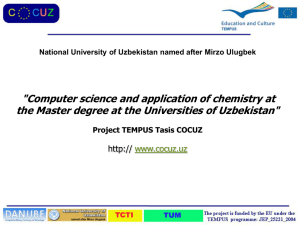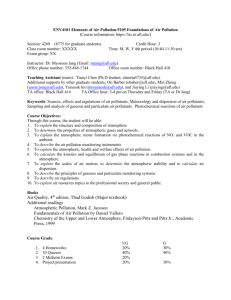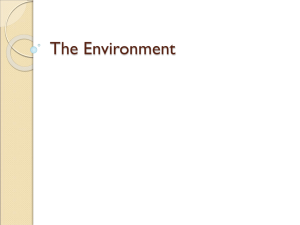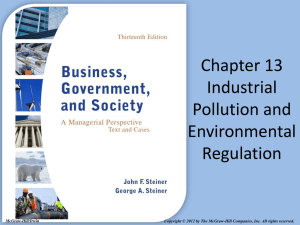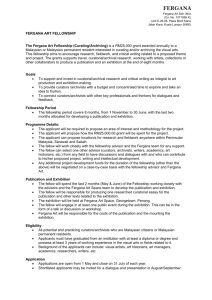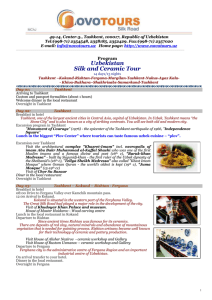Imamdjanov
advertisement
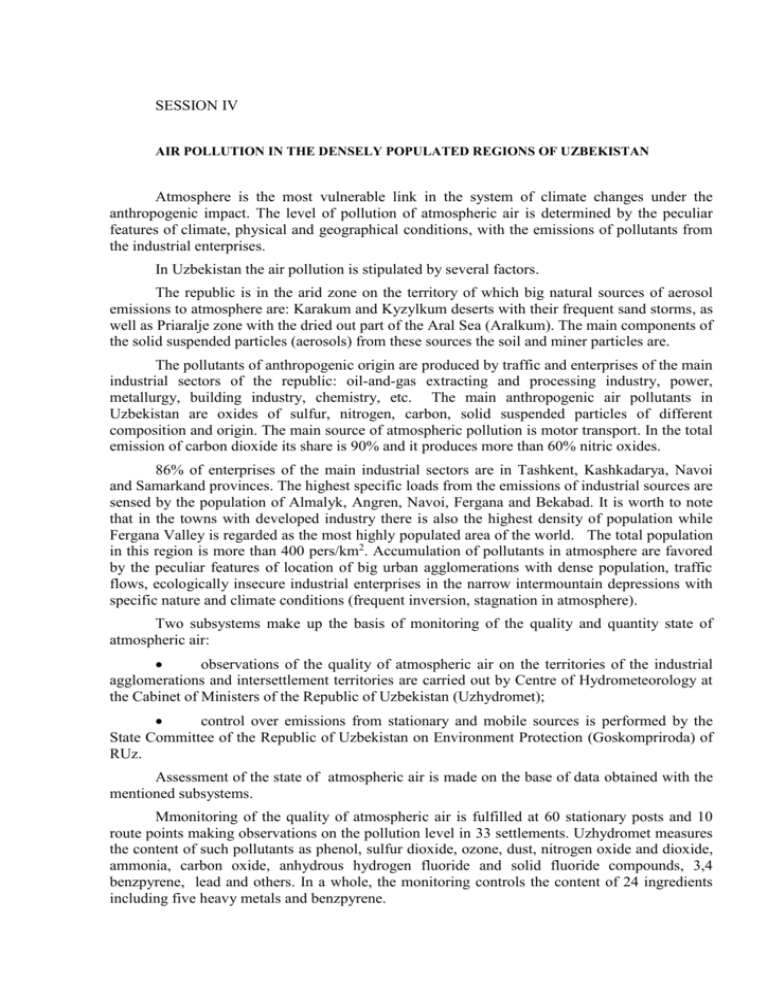
SESSION IV AIR POLLUTION IN THE DENSELY POPULATED REGIONS OF UZBEKISTAN Atmosphere is the most vulnerable link in the system of climate changes under the anthropogenic impact. The level of pollution of atmospheric air is determined by the peculiar features of climate, physical and geographical conditions, with the emissions of pollutants from the industrial enterprises. In Uzbekistan the air pollution is stipulated by several factors. The republic is in the arid zone on the territory of which big natural sources of aerosol emissions to atmosphere are: Karakum and Kyzylkum deserts with their frequent sand storms, as well as Priaralje zone with the dried out part of the Aral Sea (Aralkum). The main components of the solid suspended particles (aerosols) from these sources the soil and miner particles are. The pollutants of anthropogenic origin are produced by traffic and enterprises of the main industrial sectors of the republic: oil-and-gas extracting and processing industry, power, metallurgy, building industry, chemistry, etc. The main anthropogenic air pollutants in Uzbekistan are oxides of sulfur, nitrogen, carbon, solid suspended particles of different composition and origin. The main source of atmospheric pollution is motor transport. In the total emission of carbon dioxide its share is 90% and it produces more than 60% nitric oxides. 86% of enterprises of the main industrial sectors are in Tashkent, Kashkadarya, Navoi and Samarkand provinces. The highest specific loads from the emissions of industrial sources are sensed by the population of Almalyk, Angren, Navoi, Fergana and Bekabad. It is worth to note that in the towns with developed industry there is also the highest density of population while Fergana Valley is regarded as the most highly populated area of the world. The total population in this region is more than 400 pers/km2. Accumulation of pollutants in atmosphere are favored by the peculiar features of location of big urban agglomerations with dense population, traffic flows, ecologically insecure industrial enterprises in the narrow intermountain depressions with specific nature and climate conditions (frequent inversion, stagnation in atmosphere). Two subsystems make up the basis of monitoring of the quality and quantity state of atmospheric air: observations of the quality of atmospheric air on the territories of the industrial agglomerations and intersettlement territories are carried out by Centre of Hydrometeorology at the Cabinet of Ministers of the Republic of Uzbekistan (Uzhydromet); control over emissions from stationary and mobile sources is performed by the State Committee of the Republic of Uzbekistan on Environment Protection (Goskompriroda) of RUz. Assessment of the state of atmospheric air is made on the base of data obtained with the mentioned subsystems. Мmonitoring of the quality of atmospheric air is fulfilled at 60 stationary posts and 10 route points making observations on the pollution level in 33 settlements. Uzhydromet measures the content of such pollutants as phenol, sulfur dioxide, ozone, dust, nitrogen oxide and dioxide, ammonia, carbon oxide, anhydrous hydrogen fluoride and solid fluoride compounds, 3,4 benzpyrene, lead and others. In a whole, the monitoring controls the content of 24 ingredients including five heavy metals and benzpyrene. During the last period the content of pollutants exceeding maximum admissible concentrations (MACСС) from 1 up to 3.3 MACСС was still recorded in big cities – 5 ingredients of 24: - dust – in Andijan, Bukhara, Kagan, Kokand, Navoi, Nukus and Tashkent; - nitrogen dioxide – in Tashkent, Fergana and Navoi; - ammonia – in Andijan, Navoi and Fergana; - phenol – in Angren and Fergana; - ozone – in Angren, Bekabad, Navoi, Nukus, Tashkent, Chirchik and Fergana; According to the complex index the highest atmospheric pollution is recorded in the towns of Uzbekistan - Navoi, Tashkent, Fergana and Almalyk. The results of monitoring demonstrate that the air pollution reaches the levels which cause the negative aftereffects for the health.

